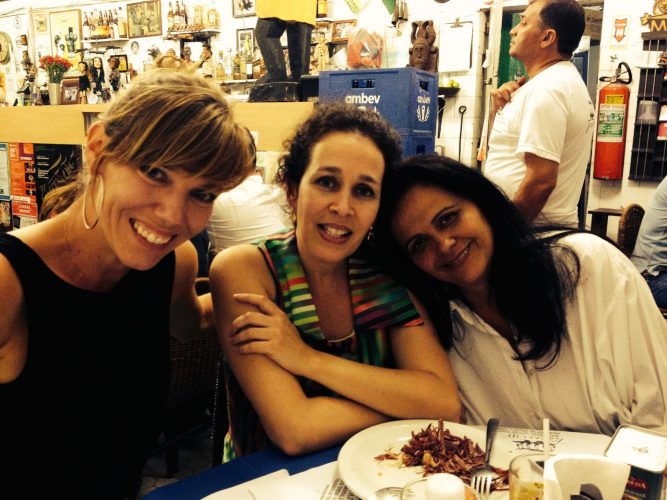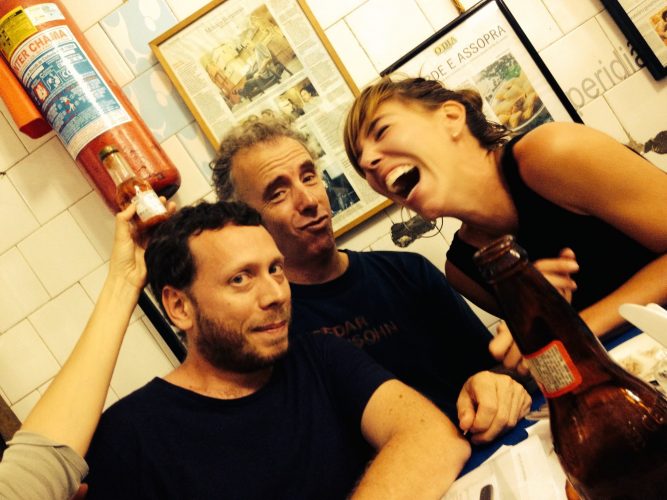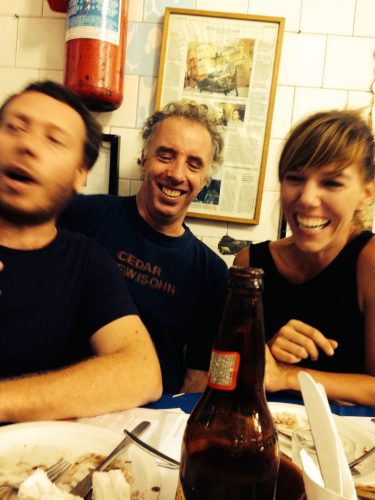About us: Van ’t Hullenaar & Vis is an Amsterdam based interdisciplinary artist duo consisting of Merel van ’t Hullenaar & Niels Vis. Together they research the experimental boundaries of visual art through the execution of conceptual projects; moving between applied and autonomous, collaborative and solitary positions. Both teach at the Royal Academy of Art in The Hague and hold MA degrees from the Sandberg Institute in Amsterdam and the Piet Zwart Institute in Rotterdam (The Netherlands). Amongst others they have previously attended artist residencies at Capacete in Rio de Janeiro (BR) and the Skowhegan School of Painting and Sculpture in Maine (USA). They have formed several temporary collectives and collaborations with other makers like in their current projects The Man-Made History of Today, that had its pilot in Brazil in 2014 and The Artefact Time Machine, taking place in Athens (GR). In the past they have also taken on positions as mediators with for instance FLAT / BijlmAIR foundation and Gallery AWA in Amsterdam and they have presented their work in national and international contexts through numerous exhibitions, screenings, performances and lectures in art spaces, institutions and festivals like; Het Nieuwe Instituut (NL), Art Athina (GR), Holland Festival (NL) Largo das Artes (BR), Kalashnikovv Gallery (SA), Chicago Artist Month (USA), SMBA (NL), Hotel MariaKapel (NL), TENT (NL) and Galleria Comunale d’Arte Contemporanea, Bologna (IT).
+ The Man-Made History Of Today – Versions Brazil By Van ‘t Hullenaar & Vis – 2016 The Man-Made History Of Today – Versions Brazil is a research project that deals with the different ways in which conversation; imagination and transformation influence creative production and touches a personal fascination concerning life-and-death subjects related to the artistic ‘maker’ and the work ‘form’. This project was developed during 6 month residency supported by the Mondriaan Foundation at Capacete in Rio de Janeiro and was presented in the form of performativity ‘readings’ at Open Studio’s and a group exhibition at Largo das Artes (now called Despina) i.c.w. Capacete. In Versions Brazil we were driven by research questions as: ‘At what point does the aura (soul) leave an artwork?’ In other words: ‘How can we determine whether an artwork is ‘dead’ or ‘alive’, when is it still active or when has it become indolent?’ In relation to these questions we observed the life and work of iconic Brazilian modernists Helio Oiticica, Lygia Clark and Lygia Pape, of the neo-concrete movement, and architectural pillars Lina Bo Bardi and Oscar Niemeyer as our 5 ancestral figures of whom we investigated how their significant works are nowadays represented and conserved. Following the preliminary intent of these makers, that all strongly advocated an active transformative way of perceiving their work, we investigated the static ‘physical presence’ of some of those iconic works. In the practice of Clark we noticed that while still alive she always explored the notions of interactivity in relation to her and her artworks. Her Bichos sculptures, which actually intended to be manipulated by the public, are now deprived of their ‘aura/soul’ by being imprisoned in glass “cages” in museums in order to preserve their integrity for future purposes. The work and theory behind Oiticica’s Penetráveis and Paragolé, that revealed the possibility that the experience and interaction with an artwork is based on a combination of; ‘belief (crer)’, ‘creation (criar)’ and ‘leisure (lazer)’ that results in ‘re-creation (crelazer)’, to us proved to be significant in the development of our research questions and the construction of our own ideology; The Man-made History of Today. The visual research of Versions Brazil investigates the ideologies behind the modernist and neo-concrete movements, combined with the artist biographies, functions as a sort of subjective mapping mechanism that we apply to material heritage that we collected. With an elaborate collection of photographs, objects and archive material, which we refer to as ‘root material’; we created collage (wall) in our studio in which we disorderly mixed past, present and future. The ‘root material’ is analysed and systematised by us with the visual tags ‘aura’, ‘form’, ‘maker’, ‘participant’ and ‘relic’ and contractions of those tags. We used these tags to dissect the artworks and artists of the Brazilian modernist into these five elements to be able to interchange and displace the separate elements with our own contributions. We made an attempt to reconnect the ancestral/deceased with the living contemporary artists, in order to create a hybrid imagery in- between them and us, that always — one way or the other — walk in their footsteps. Arising from the ‘root material’ collage we developed a series of dialogues with contemporary Brazilian makers*, in close collaboration with independent curator and a collaborative Bernardo de Souza, that all shared an vibrant ancestral relation in life and/or work to the dead modernist Oiticica, Clark, Pape, Bo Bardi and/or Niemeyers principles. For this we used a personalised ‘oracle system’ as a device to stage an equal exchange between ‘them’ – those contemporary artist in relation to their ancestral legacy, and ‘us’ intermediaries in the whole. Practically they were offered a ‘consultation’ through our personalised ‘oracle system’ based on the intuitive and analytical tools of ‘image analysis’, by use of images from our own image archive. These ‘readings’ aimed to unlock both participant’s subconscious vision; firstly through a clearly directed situation and secondly by a concluding dialog in which we together ‘sculpted a work’ by means of this conversation. The conversation was an attempt to orally rephrase the experience of the reading and to reflect on the total experience with a detailed description of an unfolding visualisation that emerged from the session, which was recorded as an audio-file. Selected fragments of these audio-files have been transcribed into scripted dialogs that together with the ‘root material’, diagrams and 3d objects formed our so-called ‘visual scripts’. In general these ‘visual scripts’ consist of a collection of elements that share common grounds but can differ in execution with each Version (Versions Brazil, Versions Colombia, Versions Greece, etc). The inevitable constant dialogue with the ‘other’ in our practice as a duo has become a specific point of interest in our work over the past years and has created a strong belief in forms of co-creation with other makers forming the basis of our Versions works. The title name Versions actually already states our practical attitude; we want to experiment with the notion that an artwork can be flexible from its initial creation, like a music score or script of a play can be activated endlessly in future. Therefore our ‘visual scripts’ — as we name them at their origin — will function as a tool that challenges the translating qualities of their reader/ performer, referring more to the manner in which the script of a play functions, creating indefinite ‘versions’ of that work, and thereby freeing it from death. We use the materials of each ‘visual scripts’ to conclude our own Version Brazil with, with a proposed cinematographic work that perhaps demonstrates to be an time-document, this of our own vulnerable moral principles as artists of ‘today’, that question history by using artistic ‘others’, in the context of our own even so-great confusion of time and place. Merel van ‘t Hullenaar & Niels Vis www.studiovthv.com Footnote: *dialogues were held with Frederico Pellachin, Ricardo Basbaum, Felippe Moraes, Pablo Ferretti, Anton Steenbock, Alex Hamburger, Keren Moscovitch, Daniela Mattos, Pablo Pijnappel, Angie VanDycke, Rodolpho Parigi, Tiago Rivaldo and Luiz Roque. -





